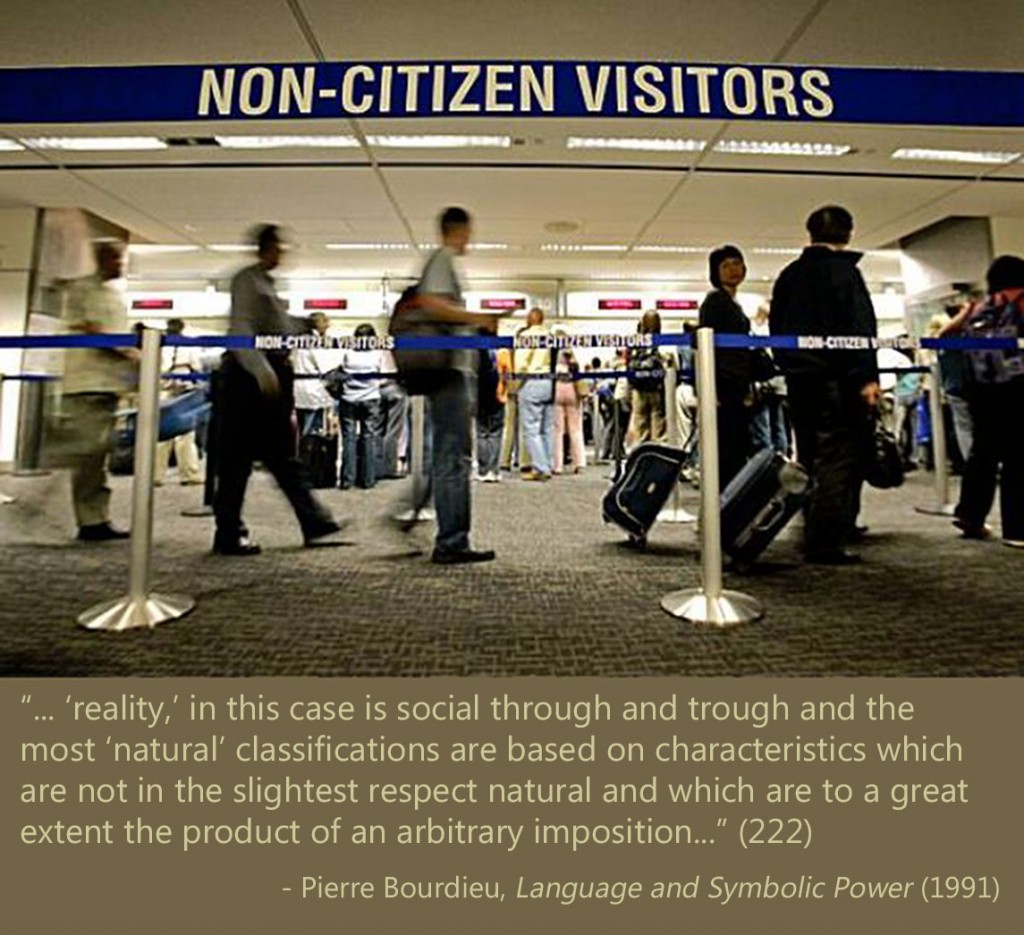 Leslie Dorough Smith wrote a post the other day on how we all resort to telling origins stories. As she noted, it’s a common rhetorical technique used when selling products and when talking about ourselves, either as individuals or as group members of nations, religions etc. No doubt we do tell origins stories and create myths to prove our worth: “I was here first!” says the little kid when competing for the swing. Continue reading “When the Stakes are High”
Leslie Dorough Smith wrote a post the other day on how we all resort to telling origins stories. As she noted, it’s a common rhetorical technique used when selling products and when talking about ourselves, either as individuals or as group members of nations, religions etc. No doubt we do tell origins stories and create myths to prove our worth: “I was here first!” says the little kid when competing for the swing. Continue reading “When the Stakes are High”
On Memorials
 Learn more.
Learn more.
On the Spot with Vaia Touna
“On the Spot” backs members of Culture on the Edge into a corner to talk about their backgrounds, their ongoing work, and what might be gained by an alternative understanding of how identity works.

Q: Vaia, you focused some of your scholarship on ancient Greek texts both before and after beginning to read social theory – could you give us an example of how the theorists you’ve read have affected the way that you now approach these ancient materials?
A: My Masters was on Euripides’ tragedy Hippolytus and the notion of Meden Agan (i.e., moderation) and how it was understood in the 5th century BCE Athens. In order to write my thesis back then, of course, I read a lot of secondary literature and commentaries on the play, heavily descriptive works on the “religion” of the ancient world, and of course how ancients might have thought/felt and the universality of their meanings that (we today presume) stay unalterable in their texts—meanings that modern scholars, with the right tools, will be able to retrieve just like the archaeologists dig up and unearth the past. I did all that in my effort to better understand and recreate that ancient world. This approach to the ancient material has changed once I started reading theorists like Russell McCutcheon, Jonathan Z. Smith, Bruce Lincoln, Michel Foucault, and others; now my data are not just these ancient texts (whether literature, or statues, vases, etc.) but also the commentaries that previously served as my “way into” the ancient world, for I came to realize that the world I was entering was the world and time period of those scholars. Continue reading “On the Spot with Vaia Touna”
On Social Space
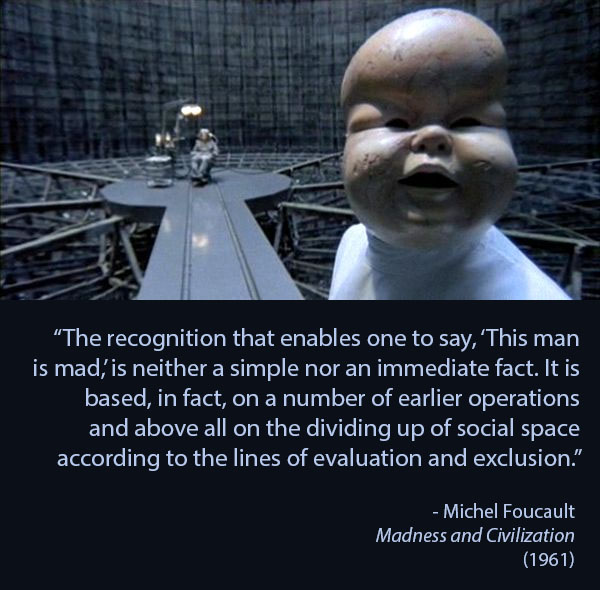 Read more.
Read more.
On Stories
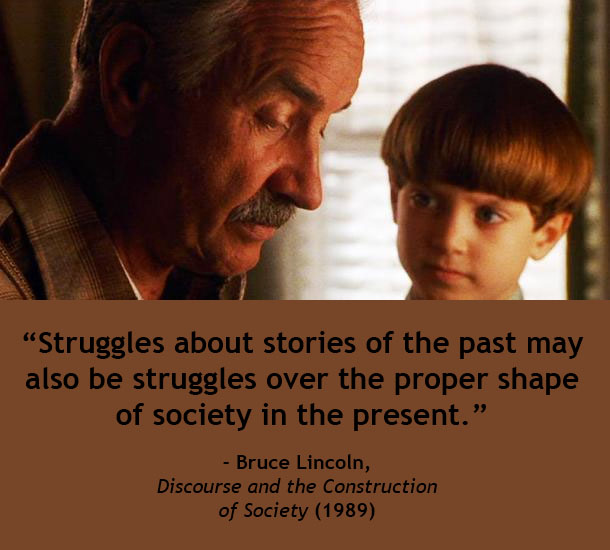 Read more.
Read more.
On Classification
On Images
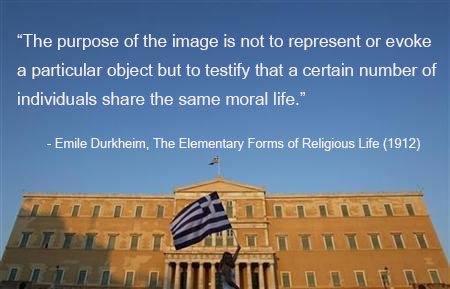 Read more.
Read more.
Double Standards
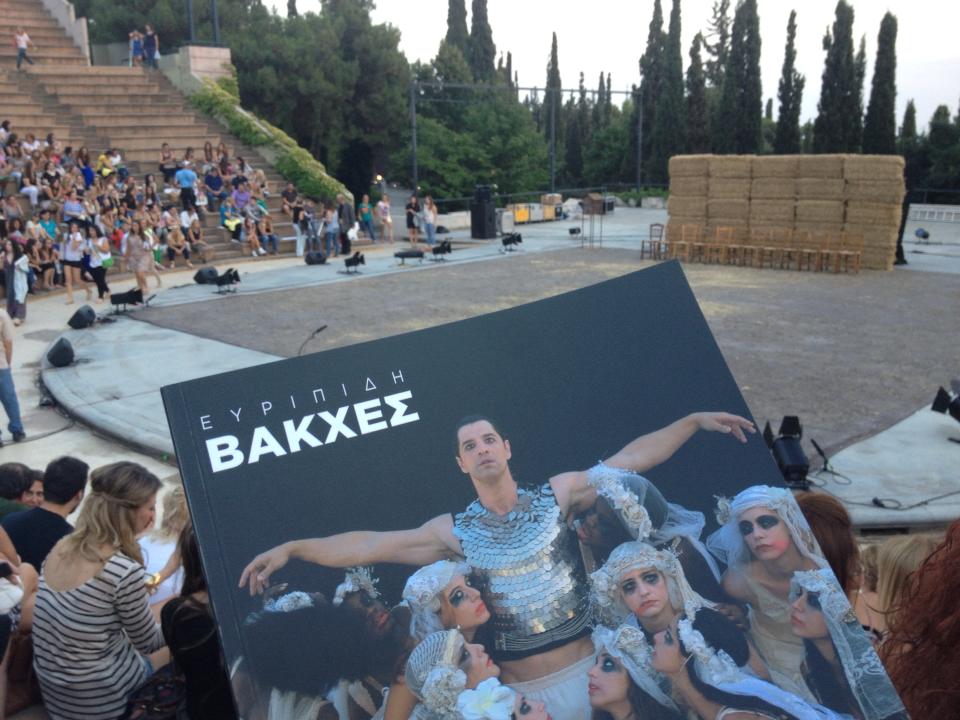 My love for the ancient Greek theatre certainly derives from my upbringing and schooling in Thessaloniki, the second largest city in Greece. For many Greeks seeing our ancient literary heritage being performed in outdoor theatres, especially during summer festivals, is certainly seen as being a step closer to our past. Today, the most well-known festival in Greece is the one that takes place every summer (since 1955) in one of our ancient theatres (known also for its great acoustics) the “sacred” (as you will hear it often referenced in Greece) theatre of Epidaurus.
My love for the ancient Greek theatre certainly derives from my upbringing and schooling in Thessaloniki, the second largest city in Greece. For many Greeks seeing our ancient literary heritage being performed in outdoor theatres, especially during summer festivals, is certainly seen as being a step closer to our past. Today, the most well-known festival in Greece is the one that takes place every summer (since 1955) in one of our ancient theatres (known also for its great acoustics) the “sacred” (as you will hear it often referenced in Greece) theatre of Epidaurus.
Frames of Identity
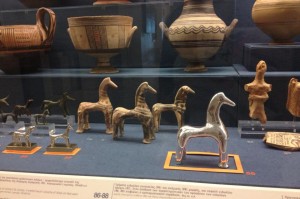
I find myself back in Greece to do research and so, a few days ago, I had the chance to visit a museum in Athens. What struck me as interesting—apart from the narratives that surround all such museum exhibits, that place them in a certain time and frame them in a way that justifies a nation’s origins—was that some artifacts were marked with numbers that corresponded to explanations beside their display case that made no sense. For example, I could see a horse but the explanation talked about a vase that also had the same display number. It took me a while to realize that in the various display cases some of the artifacts were placed in orange frames. Once I realized this I immediately searched for an explanation at the information desk. The lady enthusiastically informed me that these were objects from the gift store of the museum that, celebrating thirty years of its opening, were now included in the displays. Continue reading “Frames of Identity”
Holey Frescoes
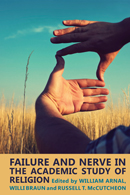 Vaia Touna recently published a chapter in Failure and Nerve in the Academic Study of Religion, entitled “Redescribing Iconoclasm: Holey Frescoes and Identity Formation.” The chapter focuses on a small Greek Orthodox church in the upper old city of Thessaloniki,Greece, and the differing local ways in which its damaged interior icons are made meaningful and understood by both its members and the scholars who have restored them.
Vaia Touna recently published a chapter in Failure and Nerve in the Academic Study of Religion, entitled “Redescribing Iconoclasm: Holey Frescoes and Identity Formation.” The chapter focuses on a small Greek Orthodox church in the upper old city of Thessaloniki,Greece, and the differing local ways in which its damaged interior icons are made meaningful and understood by both its members and the scholars who have restored them.

